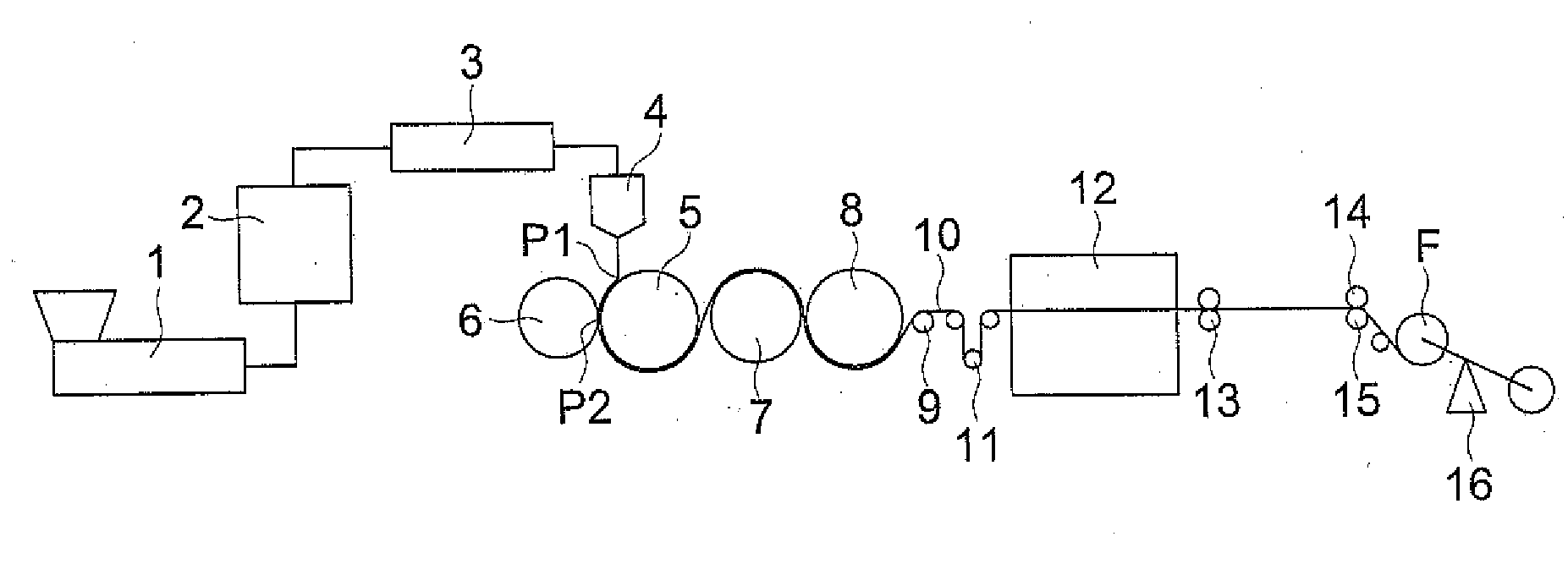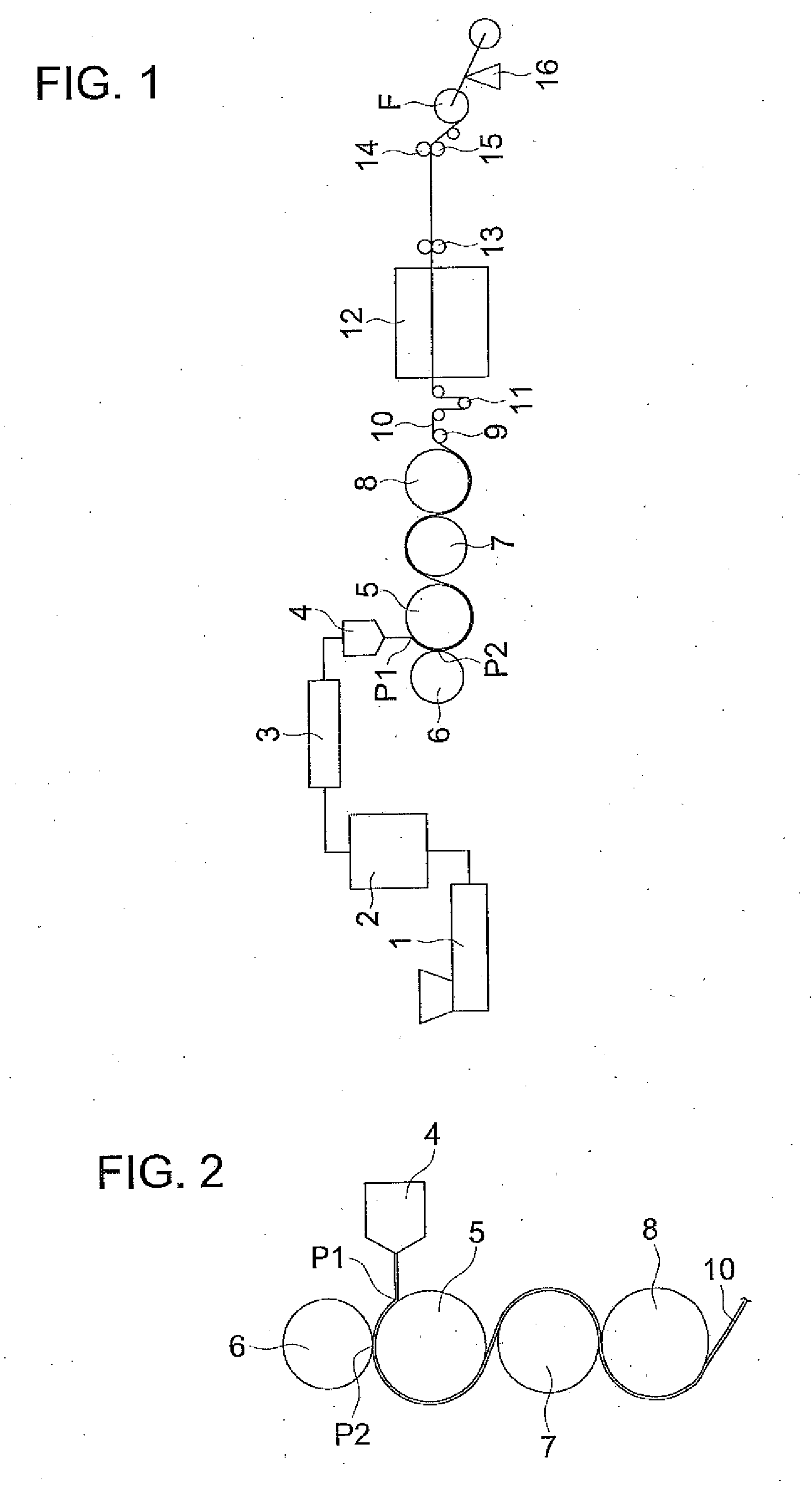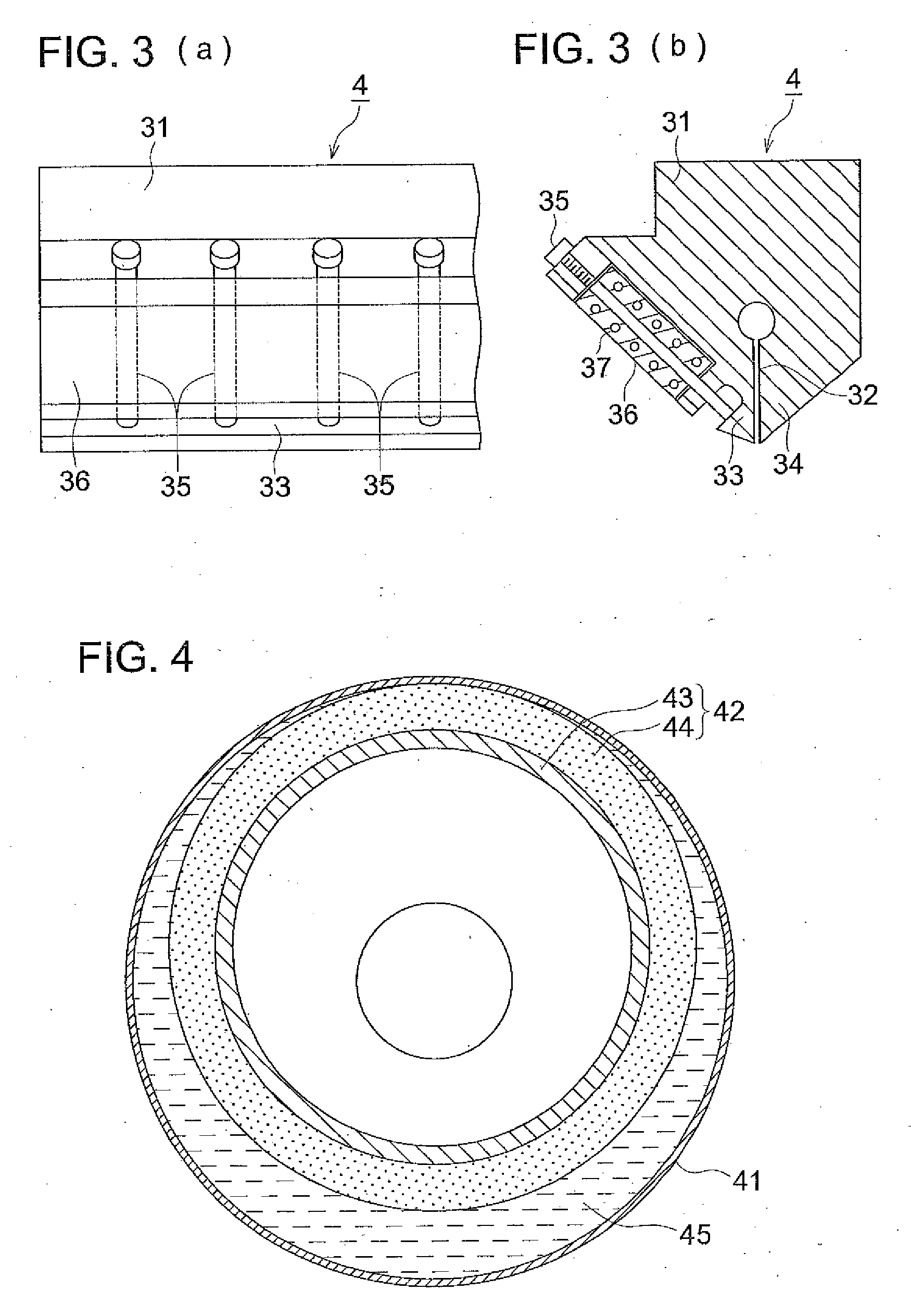Optical film, method of manufacturing the same, polarizing plate, and liquid crystal display device
a technology of optical film and liquid crystal display device, which is applied in the direction of instruments, polarizing elements, other domestic articles, etc., can solve the problems of reducing the amount of addition via vaporization, reducing the ability of uv absorption, and not achieving sufficient transparency, etc., and achieves the effect of less generation and high contras
- Summary
- Abstract
- Description
- Claims
- Application Information
AI Technical Summary
Benefits of technology
Problems solved by technology
Method used
Image
Examples
example 1
Preparation of Optical Film (Hereinafter, Referred to as a Cellulose Ester Film) 1-1
[0319]One hundred parts of the foregoing cellulose ester C-1 were dried under reduced pressure at 70° C. for 3 hours, and cooled to room temperature. The following additives were added into this cellulose ester, and the resulting was melted and mixed at 230° C. to form pellets employing a biaxial extruder. These pellets were melted under nitrogen atmosphere at a melting temperature of 250° C., and extruded from a T type die. After a film was prepared by a film forming method employing an elastic touch roll shown in the forgoing FIG. 4, a knurling treatment of a width of 10 mm and a height of 5 μm at the film ends was carried out, and the film was wound on a winding core at a winding tension of 220 N / m and a taper of 40% to prepare cellulose ester film 1-1 having a winding length of 3200 m, a film width of 1.8 m and a film thickness of 80 μm.
(Additives)Exemplified compound 1-12partsExemplified compoun...
example 2
[0340]Cellulose ester films 2-1-2-6 were prepared similarly to preparation of cellulose ester film 1-1, except that as to additives having been used for preparation of cellulose ester film 1-1 in Example 1, a compound represented by Formula (2), additive 2 and plasticizer 1 were replaced by compounds described in Table 4.
[0341]Further, wrinkles when starting winding, horseback failure and winding core transfer were evaluated by the same method as in Example 1, and after preparing a polarizing plate, front contrast was evaluated as the characteristic evaluation of a liquid crystal display device.
[0342]Evaluated results are shown in Table 4.
TABLE 4CompoundWrinklesCelluloseUVrepresentedwhenHorse-WindingesterCelluloseabsorbentby FormulastartingbackcoreFrontfilm No.esterkind(2)AdditivesPlasticizerwindingfailuretransfercontrastRemarks2-1C-11-1103Additive 2Plasticizer 2AAA815Inv.2-2C-11-1103Additive 3Plasticizer 2AAA805Inv.2-3C-11-1103Additive 3Plasticizer 1AAA805Inv.2-4C-11-1135Additive 3...
example 3
[0344]Cellulose ester films 3-1 and 3-2 were prepared similarly to preparation of cellulose ester film 1-1, except that as to additives having been used for preparation of cellulose ester film 1-1 in Example 1, exemplified compound 103 was replaced by additive 4: Sumilizer GM (produced by Sumitomo Chemical Co., Ltd.) or additive 5: Sumilizer GS (produced by Sumitomo Chemical Co., Ltd.) having an equimolar amount to exemplified compound 103.
[0345]Further, wrinkles when starting winding, horseback failure and winding core transfer were evaluated by the same method as in Example 1, and after preparing a polarizing-plate, front contrast was evaluated as the characteristic evaluation of a liquid crystal display device.
[0346]Cellulose ester films of the present invention 3-1 and 3-2 each containing a UV absorbent of the present invention exhibit excellent properties such as wrinkles when starting winding, horseback failure and winding core transfer. Further, when a polarizing plate prepar...
PUM
| Property | Measurement | Unit |
|---|---|---|
| wavelength | aaaaa | aaaaa |
| wavelength | aaaaa | aaaaa |
| optical | aaaaa | aaaaa |
Abstract
Description
Claims
Application Information
 Login to View More
Login to View More - R&D
- Intellectual Property
- Life Sciences
- Materials
- Tech Scout
- Unparalleled Data Quality
- Higher Quality Content
- 60% Fewer Hallucinations
Browse by: Latest US Patents, China's latest patents, Technical Efficacy Thesaurus, Application Domain, Technology Topic, Popular Technical Reports.
© 2025 PatSnap. All rights reserved.Legal|Privacy policy|Modern Slavery Act Transparency Statement|Sitemap|About US| Contact US: help@patsnap.com



